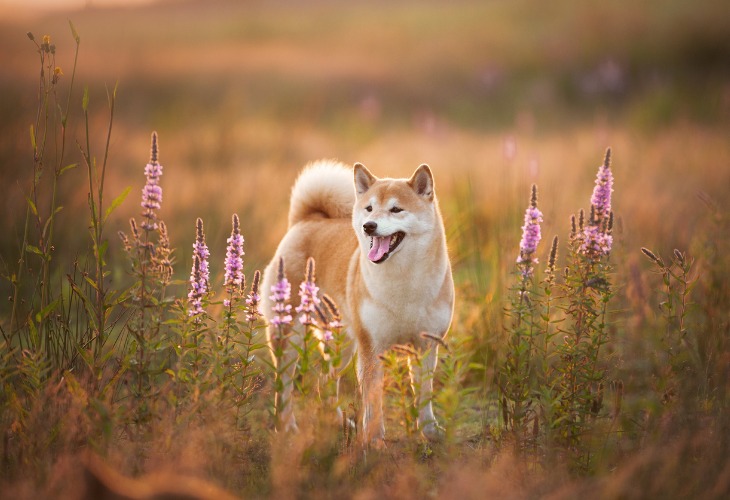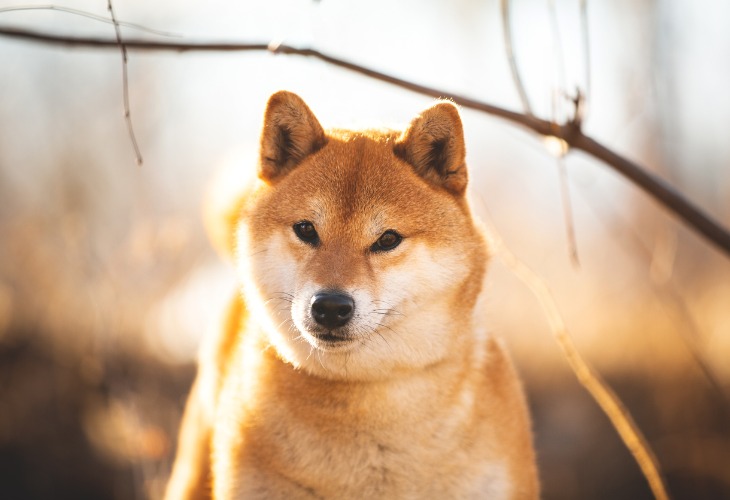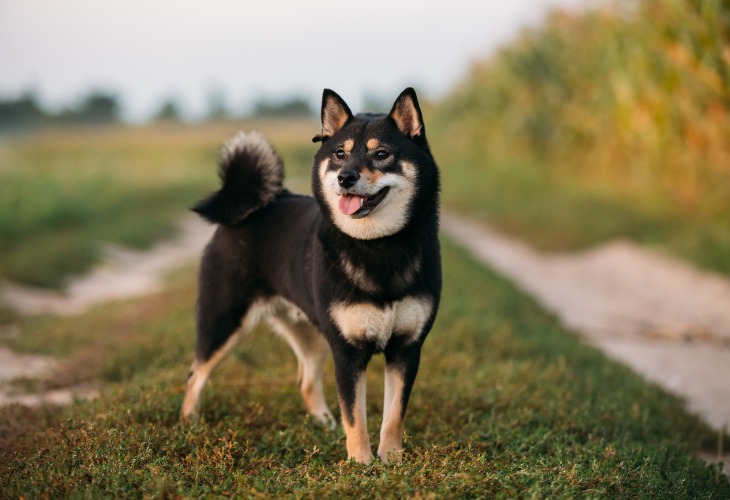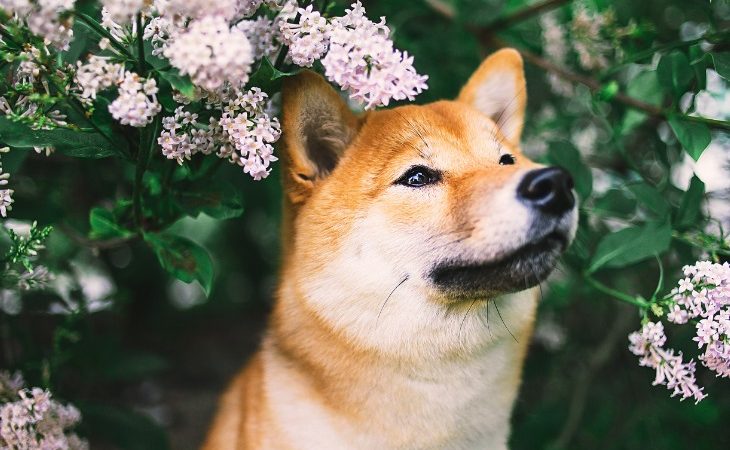Breed standard: Japan Kennel Club, FCI I Size: Small I Average Lifespan: 12+ years I Temperament: Bold, independent, and good-natured I Coat Length: Short-haired I Origin: Japan
The Shiba Inu is a faithful, affectionate, independent, and discreet dog.
The Shiba Inu’s origins
Evidence dating from the Neolithic period
The Shiba Inu is one of the oldest dog breeds. Originally from Japan, the first skeletons that resemble the Shiba Inu date back to 8000 BC. These dogs measured between 36 and 48 cm. Skeletons found north of Honshu have been assembled to create two skeletons of 57 cm (around 22 inches). These remains belonged to the Jomon people.
Despite the discovery of these remains, it is still impossible to determine the exact origin of the Shiba Inu. Although these remains were discovered in Japan, some researchers hypothesize that they could have come from animals imported from China or Korea.
From Japan to the rest of the world
Japan underwent several invasions. In 200 B.C., it was invaded by a people from the West who drove the Jomons to the North of the country. These new people brought with them many talents such as farming skills, iron and bronze weapon-making skills, and their dogs. They resembled Shiba Inu or Samoyeds with their straight ears and curved tail. It is believed that these dogs mated with the dogs of the Jomon people, bringing forth a new dog breed.
In the 16th century, the first Europeans disembarked in Japan, notably via Portuguese trading ships. They brought with them their dogs, which were mostly terriers and mastiffs. European dogs were mostly found in port cities, where their owners lived. They intermingled quite quickly with the local dogs and formed a new breed. This new breed became very appreciated by the ruling class thanks to its wild boar and deer hunting qualities. Sketches of this breed appeared in the 19th century by Diebold, a Dutch doctor.
Japan came out of its isolation when it entered the industrial era led by the United States and Europe. Numerous dogs from abroad arrived then on the archipelago and endangered the Japanese breeds because of the many crossings. The breeds found in the mountains and remote areas were preserved.
It is important to note that at the time in Japan, dog fights were very widespread. To increase the strength and size of the dogs, and thus ensure victory, it was common to cross Akita Inus with Mastiffs. In the 20th century, Japan did everything possible to protect its culture. The Japanese dog breeds were treasured and breeders worked hard to restore the breed to its original appearance.
The Shiba Inu, a national symbol
Dr. Hirokichi Saito, known and recognized for his many travels throughout Japan to study purebred Japanese dogs, led the mission to census Japanese dog breeds.
The breeds listed are named according to their province of origin, with the exception of Shiba, which comes from the Nagano Mountains. The origin of the name “Shiba” is a mystery. Many theories on the subject exist. Some hypothesize that the name means “dry light brown bush”, which would refer to its function as a hunter or the color of its coat. Others theorize that “shiba” means “small” in ancient Japanese and would therefore refer to its size.
According to their location, there are three types of Shiba in Japan:
- The Shinshu Shiba is native to central Japan, in Nagano. It is small with a red coat and round eyes.
- The Mino Shiba comes from Gifu, near Nagano. It is smaller than the first one and has a red coat and almond-shaped eyes. Its ears are triangular.
- The San’In Shiba is of medium size (about 45 cm or 18 in) and is native to southwest Japan. Its coat is black spotted.
It is however necessary to know that most of the Shiba Inus have been crossed with European breeds, so it is very difficult to find a true pure breed.
Dr. Hirokichi Saito discovered a red-haired Shiba with its tail curled up on its back in the Gumma Mountains in 1928. This dog was named Jokkoku and became very popular, so much so that many Japanese went to the mountains to acquire this type of Shiba Inu.
The same year, Dr. Saito decided to open his own club, the Nihon Ken Hozonkai. In 1932, the first dog show was organized by the club. It was supported by the government and the Shiba Inu was granted the status of a national symbol in 1936.
Thanks to the dog shows, a certain number of breeders were selected to preserve the breed. In 1948, the male Nala Go Akashisho was born and became the founder of the Shiba lines that we know today.
Before the Second World War and the 1959 epidemic, there were four Shiba Inu bloodlines but many dogs disappeared after these events. Breeders then found themselves forced to crossbreed.
However, Japanese Shiba Inus are still different from Shiba Inus from other countries. The “Nippo” type is mostly represented in Japan. There are therefore many standards depending on the country, depending on the size and color.
In 1954, Shiba Inus were imported for the first time to the United States.

The Shiba Inu’s personality
The Shiba Inu’s qualities
The Shiba Inu is described as a loyal and affectionate dog with its family. They can, however, show a rather independent side as well.
Shiba Inus generally have an easy and calm character. They adapt very well to children and can share play with them. They can also live in an apartment and live with other animals, especially cats.
From the age of eight weeks, they can be autonomous and clean.
Does the Shiba Inu have any downsides?
Despite their easy-going temperament, they can be very stubborn at times. When training a Shiba Inu, you must be firm and patient.
It should not be forgotten that the Shiba Inu is originally a hunting dog so that living with small animals can be difficult. The same is true between male dogs with whom agreement can be complicated.

The physical characteristics of the Shiba Inu
From 1898 to 1912, many dogs, especially English Setters or Pointers, were crossed with the Shiba Inu. Purebred Shiba Inu are therefore extremely rare. In 1928, hunters and scholars sought to preserve the original breed and began the preservation of the few remaining purebred lines.
In 1934, the first unified standard was established. A few years later, the Shiba Inu was recognized as a “Natural Monument” in Japan in 1937. The breed was bred and improved to become the one we know today.
General appearance
The Shiba Inu is a small dog breed that measures between 37 and 40 cm (14 and 16 in) at the shoulders. It can weigh up to 10 kg (around 22 lbs). It is a well-proportioned dog with well-developed bones and muscles. The ratio between height at the shoulders and length of the body is 10:11.
Zooming in on the Shiba Inu’s head
The Shiba Inu has a broad forehead with a clear stop and a slight furrow. Its nose is black and its muzzle moderately thick. It tapers in length. Its lips are tight. They have strong, scissor bite teeth and jaws. Its cheeks are well developed.
The Shiba Inu’s eyes are small, triangular, and dark-colored.
Its ears are quite small, triangular, and well upright. They are slightly tilted forward.
The Shiba Inu’s body
The neck of the Shiba Inu is thick, strong, and well proportioned in relation to its head and body. Its back is straight and solid, its loins are broad and muscular. Its chest is well let down with slightly arched ribs. The belly is well raised. The shoulder blades are slightly oblique.
Their thighs are long but their legs are short and well developed. The hock is solid and thick.
Its tail is set high. It is thick and worn tightly curled or curved into a sickle. The tip almost reaches the hock when lowered.

The Shiba Inu: coat, color, and grooming
The Shiba Inu’s coat
The Shiba Inu has a rough and straight short coat and a soft and dense undercoat. The hair on its tail is slightly longer.
The Shiba Inu’s color
The Shiba Inu’s coat can be of several colors: red, black and tan, cream, sesame, black sesame, and red sesame.
- Sesame is a color that mixes black and white hairs equally.
- Black sesame has more black hairs than white hairs.
- Red sesame represents black hairs on a red coat background..
No matter what color your Shiba Inu is, it must have what is called Urajiro. This is the presence of white hairs on the sides of the muzzle, the cheeks, under the jaw, on the throat, chest, and belly. The white color is also present on the underside of the tail and the inner side of the limbs.
Grooming Shiba Inus
A Shiba Inu should be brushed once a week. You can also give it a bath from time to time.
Did you know?
- Shiba Inus can smile! They flatten their ears as much as possible and seem to smile. This facial expression is exclusively reserved for moments of pure happiness.
- One of the most popular Shiba Inus became famous thanks to the “Doge” Internet meme trend which was popularized in 2013. The original meme featured a picture of Kabosu (かぼす), a female Shiba Inu from Japan, with cute phrases written in broken English surrounding her head.
The Shiba Inu at a glance
Size: measures between 37 and 40 cm (14 and 16 in) high at the shoulders
Weight: between 9 and 11 kg (around 22 lbs)
Health: generally in good health with no particular problems identified
Are Shiba Inus good with children? The Shiba Inu likes peacefulness, but it also enjoys the company of children.
Is the Shiba Inu easy to train? Although the Shiba Inu is rather easygoing, they can be stubborn when it comes to training. It will be necessary to be firm, but respectful.

